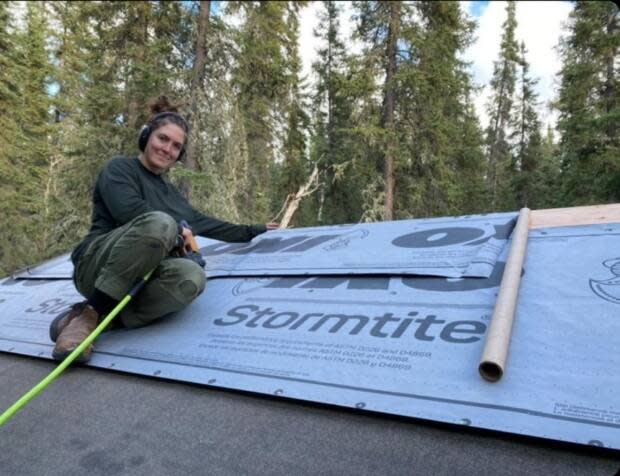New zoning bylaw may be 'missing piece' to ease Yellowknife's housing crunch

Some local leaders in Yellowknife say recent changes to the city's zoning bylaw — and a few big housing projects — could eventually help move the dial on affordability and availability of rental units.
Rental vacancy rates in Yellowknife often hover around 1 per cent. Affordable housing units are hard to come by, and the tight rental market creates a dire situation for many renters seeking a place to live, leaving them with few options.
In March, Yellowknife city councillors passed a new zoning bylaw, which proponents say will improve the availability and diversity of housing options in the near future.
The previous zoning bylaw set a limit on how many units could go on one lot, meaning property owners had to go through extra hoops if they wanted to construct a basement suite, laneway home or duplex, for example. That meant cheaper housing options weren't being built, creating a gap called the "missing middle."
The unit limit has now increased, making it easier for residents to play a role in adding to the city's housing supply, according to Yellowknife Mayor Rebecca Alty.
"Going forward, we've already had a lot of development permits and building permits submitted to build [new units]," said Alty. "So that's positive for a year, year plus out."
There are also some larger projects underway that are unrelated to the new zoning bylaw, like the AVENS Pavilion, which will introduce 102 new homes for seniors, and the 'West Bay' condos by Tin Can Hill, which Alty said is nearly completed.

These bigger apartment or condo projects add a lot of new units to the city's housing stock, but they also entail a costly investment that can deter investors and developers.
"You're going to need deep pockets to pay for that," said Alty.
On the other hand, renovating a portion of your home into a second suite, adding another unit in your backyard, or building a duplex requires less of an initial start-up cost, making them more attainable.
Opportunity for Yellowknifers to 'build their own city'
For Rob Warburton, the president of the Yellowknife Chamber of Commerce, both types of development are needed to alleviate strain in the city's housing market.
In part, that's why he paid close attention to the development of the new zoning bylaw.
"We have a lot of capacity here to build more stuff, especially rental housing," said Warburton, adding the original zoning bylaw didn't "allow it to happen to scale that a local person could do it."

Now, there's more opportunities to do so. "I think the missing piece was kind of the access to do and the ability to do local, smaller stuff," Warburton said.
"It's now created an opportunity, I guess, for local people to actually build their own city."
He said over the past 10 or so years, there hasn't been much development in terms of building larger scale apartment or condominium buildings. That means a bulk of Yellowknife's housing complexes are becoming dated.
"That's part of the reason why we have this huge demand now," said Warburton.
Education another missing piece
Warburton also said there's not really much education out there in terms of helping homeowners understand what programs or support may be available to them if they do decide to develop smaller scale units.
He pointed to new financial assistance programs from the Canada Mortgage and Housing Corporation, which he believes make it easier for regular residents to get into small-scale development. If you're not familiar with the field, it's hard to know what programs exist, he said.
"It's terrifying, right? It's a big leap. It's, you know, financially a big risk or the perception of a big risk," said Warburton.
"So how do we fix that? I'm working on trying to figure out what that would look like, so we can kind of develop locally."
Cat McGurk, a carpenter and the president of Makerspace, said barriers to building multi-family units remain.
Across the country, but especially up North, there's a dire labour shortage. "We don't have enough people to train people," said McGurk, which will lead to construction delays down the road.

Construction costs are also high. McGurk said the cost of building materials has gone up "astronomically in the last several years and especially in the last few months." In some places, lumber prices have increased by 40 per cent due to supply chain issues.
Finally, there's a conceptual barrier. The white picket fence is still broadly considered the "measure of success," said McGurk, which leads to policies and tax breaks that prioritize single-unit dwellings.
"We're still trying to convince people that it's okay to not own, you know, a white picket fence, 1,500-square-foot bungalow."

 Yahoo Movies
Yahoo Movies 
